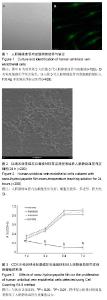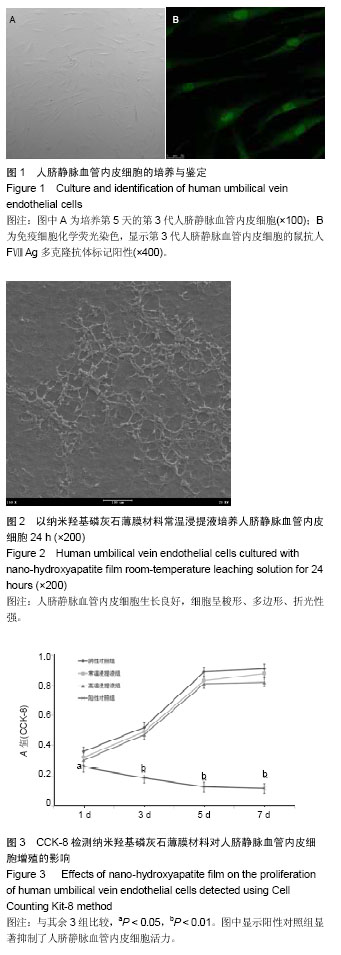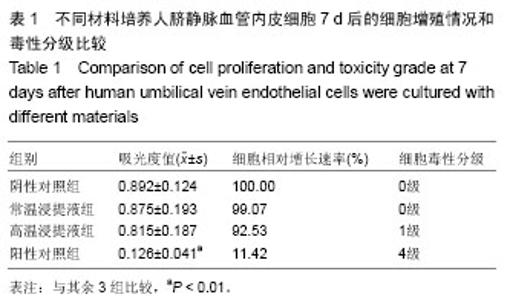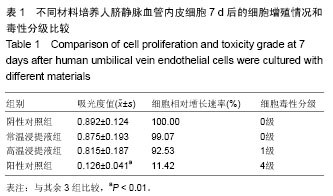| [1] |
Pu Rui, Chen Ziyang, Yuan Lingyan.
Characteristics and effects of exosomes from different cell sources in cardioprotection
[J]. Chinese Journal of Tissue Engineering Research, 2021, 25(在线): 1-.
|
| [2] |
Jiang Xin, Qiao Liangwei, Sun Dong, Li Ming, Fang Jun, Qu Qingshan.
Expression of long chain non-coding RNA PGM5-AS1 in serum of renal transplant patients and its regulation of human glomerular endothelial cells
[J]. Chinese Journal of Tissue Engineering Research, 2021, 25(5): 741-745.
|
| [3] |
Jiang Tao, Ma Lei, Li Zhiqiang, Shou Xi, Duan Mingjun, Wu Shuo, Ma Chuang, Wei Qin.
Platelet-derived growth factor BB induces bone marrow mesenchymal stem cells to differentiate into vascular endothelial cells
[J]. Chinese Journal of Tissue Engineering Research, 2021, 25(25): 3937-3942.
|
| [4] |
Chen Siqi, Xian Debin, Xu Rongsheng, Qin Zhongjie, Zhang Lei, Xia Delin.
Effects of bone marrow mesenchymal stem cells and human umbilical vein endothelial cells combined with hydroxyapatite-tricalcium phosphate scaffolds on early angiogenesis in skull defect repair in rats
[J]. Chinese Journal of Tissue Engineering Research, 2021, 25(22): 3458-3465.
|
| [5] |
Mo Jianling, He Shaoru, Feng Bowen, Jian Minqiao, Zhang Xiaohui, Liu Caisheng, Liang Yijing, Liu Yumei, Chen Liang, Zhou Haiyu, Liu Yanhui.
Forming prevascularized cell sheets and the expression of angiogenesis-related factors
[J]. Chinese Journal of Tissue Engineering Research, 2021, 25(22): 3479-3486.
|
| [6] |
Cao Yang, Zhang Junping, Peng Li, Ding Yi, Li Guanghui.
Isolation and culture of rabbit aortic endothelial cells and biological characteristics
[J]. Chinese Journal of Tissue Engineering Research, 2021, 25(19): 3000-3003.
|
| [7] |
Wang Huili, Chen Zhijiang, Wu Bingyi.
Glia maturation factor-gamma inhibits the proliferation of human colorectal cancer LoVo cells and affects the cytoskeletal motion of human umbilical vein endothelial cells
[J]. Chinese Journal of Tissue Engineering Research, 2021, 25(13): 2055-2059.
|
| [8] |
Liu Tao, Zhang Nini, Huang Guilin .
Relationship between extracellular vesicles and radiation-induced tissue injury
[J]. Chinese Journal of Tissue Engineering Research, 2021, 25(13): 2121-2126.
|
| [9] |
Fan Haixia, Tan Qingkun, Wang Hong, Cheng Huanzhi, Liu Xue, Ching-chang Ko, Geng Haixia.
Rabbit skull defects repaired by the hydroxyapatite/geltin scaffold combined with bone marrow mesenchymal stem cells and umbilical vein endothelial cells
[J]. Chinese Journal of Tissue Engineering Research, 2021, 25(10): 1495-1499.
|
| [10] |
Gu Jingjing, Zhou Rui, Yang Tingting, Yang Xiaoping, Xu Fei, Zheng Bo.
Supporting effect of human skeletal muscle-derived myoendothelial cells on hematopoietic stem/progenitor cells in vitro
[J]. Chinese Journal of Tissue Engineering Research, 2021, 25(1): 50-55.
|
| [11] |
Zhang Jian, Chen Miao, Li Weixin, Ye Yichao, Xu Huiyou, Ma Ke, Chen Xuyi, Sun Hongtao, Zhang Sai.
Collagen/heparin sulfate scaffolds loaded with brain-derived neurotrophic factor promote neurological and locomotor function recovery in rats after traumatic brain injury
[J]. Chinese Journal of Tissue Engineering Research, 2020, 24(34): 5538-5544.
|
| [12] |
Chen Jia, Yang Yiqiang, Hu Chen, Chen Qi, Zhao Tian, Yong Min, Ma Dongyang, Ren Liling.
Fabrication of prevascularized osteogenic differentiated cell sheet based on human bone marrow mesenchymal stem cells and human umbilical vein endothelial cells
[J]. Chinese Journal of Tissue Engineering Research, 2020, 24(31): 4934-4940.
|
| [13] |
Cao Baichuan, Zeng Gaofeng, Gao Yunbing, Deng Guiying, Cen Zhongxi, Zhang Chuanyang, Guo Yande, Zong Shaohui.
Heat-shock endothelial cells induce differentiation of bone
marrow mesenchymal stem cells into vascular endothelial cells
[J]. Chinese Journal of Tissue Engineering Research, 2020, 24(19): 3023-3028.
|
| [14] |
Cao Yang, Hu Ping, Tian Min, Wei Fang, Gu Qing, Lü Hongbin.
Effects of
6-phosphofructokinase-2/fructose-2,6-bisphosphatase 3 on tubule formation of
human umbilical vein endothelial cells
[J]. Chinese Journal of Tissue Engineering Research, 2020, 24(14): 2217-2222.
|
| [15] |
Zhao Jianfeng, Geng Yu, Chen Qianbo, Yang Jinghui, Li Yan.
Changes in insulin resistance and inflammatory factors in
cataract patients with glaucoma after phacoemulsification and trabeculectomy: a
self-controlled trial
[J]. Chinese Journal of Tissue Engineering Research, 2020, 24(11): 1750-1755.
|



